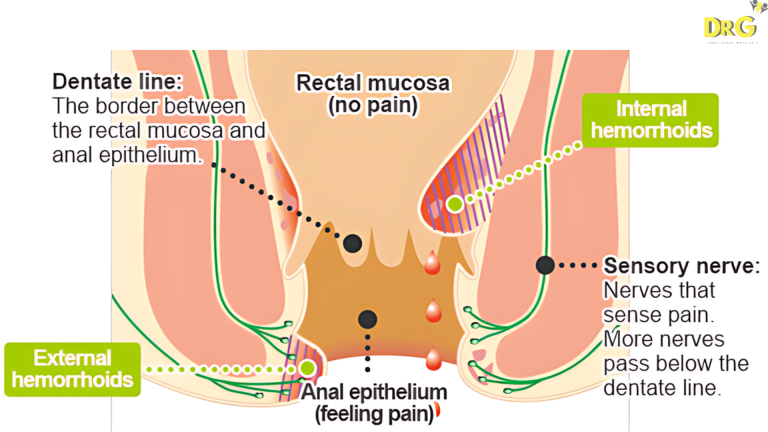
What is haemorrhoids?
Haemorrhoids also known as piles, are a common medical condition
Haemorrhoids also known as piles, are a common medical condition
affecting the anal region. They occur when the blood vessels in the rectum or anus become
swollen and inflamed. This condition can be classified into two types: internal and external
haemorrhoids. Both types can cause discomfort and other symptoms, but their causes,
symptoms, and treatments can differ significantly. This article provides an in-depth
comparison of internal versus external haemorrhoids, specifically focusing on their impact on
females.
Internal Haemorrhoids
Internal haemorrhoids are located inside the rectum, above the pectinate line, and are
typically not visible. They are covered by the mucous membrane lining the rectum.
Symptoms
• Painless Bleeding: One of the most common symptoms of internal haemorrhoids is
painless rectal bleeding, usually noticed during bowel movements.
• Prolapse: In some cases, internal haemorrhoids may prolapse or protrude outside the
anal opening, causing discomfort and irritation.
• Mucus Discharge: A discharge of mucus may occur, causing skin irritation.
• Feeling of Incomplete Evacuation: Some individuals may feel as though they haven’t
completely emptied their bowels.
Causes
• Straining During Bowel Movements: This is a significant cause of internal
haemorrhoids, often due to chronic constipation.
• Pregnancy: Hormonal changes and increased pressure on the pelvic veins during
pregnancy can contribute to the development of internal haemorrhoids.
• Obesity: Excess body weight increases pressure on the rectal veins.
• Diet: Low fibre intake can lead to constipation, increasing the risk of haemorrhoids.
External Haemorrhoids
Location and Characteristics
External haemorrhoids develop outside the anus, below the pectinate line, and are covered by
skin, making them visible and often palpable as lumps around the anal area.
Symptoms
• Pain and Discomfort: External haemorrhoids can be very painful, especially during
bowel movements or when sitting.
• Swelling: Swelling and lumps around the anus are common.
• Itching and Irritation: The skin around the anus can become irritated and itchy.
• Bleeding: Bleeding may occur, especially if the haemorrhoid is thrombosed (contains
a blood clot).
Internal and external haemorrhoids can significantly impact the quality of life, especially for
females during pregnancy and postpartum. Understanding the differences in symptoms, causes,
and treatments is essential for effective management. With appropriate lifestyle changes,
medical treatments, and, if necessary, surgical interventions, individuals can find relief from
haemorrhoid symptoms and prevent future occurrences. If you suspect you have haemorrhoids
or experience severe symptoms, consult with a healthcare provider for a proper diagnosis and
treatment plan.

